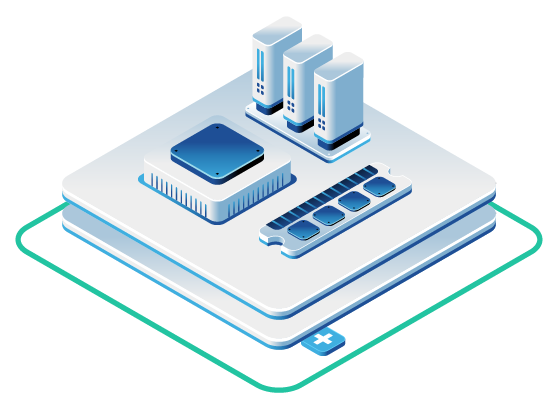If you’re looking to simplify your multi-cloud strategy, combining Kubernetes with OpenStack is a powerful approach. OpenStack provides the core infrastructure-as-a-service (IaaS), and Kubernetes orchestrates your containerized applications on top of it, giving you a consistent platform everywhere.
This guide gives you a straightforward look at how to plan, build, and manage a multi-cloud network using these two technologies. We’ll cover everything from initial setup and security to scaling and keeping things running smoothly.
Part 1: Planning Your Environment
Before you start spinning up servers, a little planning goes a long way. You need to think about your hardware, how you’ll allocate resources, and your security strategy.
Hardware and Resource Planning
The hardware you need depends entirely on your workload. Instead of a fixed number, think in terms of principles:
- Compute: You’ll need enough CPU cores and RAM to run your OpenStack control plane, Kubernetes nodes, and your actual applications without any bottlenecks. Start by analyzing your application’s needs and plan for growth.
- Storage: Fast storage is key. For distributed workloads, a storage platform like Ceph is a great choice because it can scale out and provide consistent performance for persistent container volumes.
- Networking: Gigabit networking is a baseline for communication between nodes. For traffic between different cloud regions or data centers, you’ll need to plan for adequate bandwidth to handle your container traffic and potential usage spikes.
When you’re setting up your virtual machines in OpenStack, be realistic. Size them appropriately for their role and shut down what you’re not using to save resources.
Foundational Security
Build your security in from the start. Here are the essentials for any multi-cloud setup:
- Network Segmentation: Use OpenStack’s networking features (Neutron) and Kubernetes Network Policies to isolate clusters, namespaces, and even specific applications. This prevents a problem in one area from spreading to others.
- Role-Based Access Control (RBAC): Apply the principle of least privilege in both OpenStack and Kubernetes. Only give users and services the permissions they absolutely need to do their jobs.
- Data Encryption: Encrypt your data everywhere – at rest on your storage volumes and in transit between services and across clouds.
Centralized Logging: Funnel security logs from all your environments into a single, secure location. This makes it much easier to spot and investigate suspicious activity. - Compliance: If you handle sensitive data, make sure your architecture meets industry standards like SOC 2, HIPAA, or PCI DSS from day one.
Part 2: Building and Managing Your Multi-Cloud Platform
With a solid plan, you can start building. This involves setting up your OpenStack cloud, deploying Kubernetes, and putting automation in place.
Infrastructure Setup
Your first step is getting your OpenStack private cloud running. You can build it yourself or use a provider like OpenMetal to speed things up. Once OpenStack is ready, you’ll use it to:
- Provision Ceph Storage Pools: Create the backend storage for your Kubernetes persistent volumes.
- Launch OpenStack Instances (VMs): These will serve as the control plane and worker nodes for your Kubernetes clusters.
With the VMs running, you can install Kubernetes. Tools like KubeSpray or kOps can help automate this process on top of OpenStack. You’ll also want to install the OpenStack Cloud Provider, which lets Kubernetes talk to OpenStack APIs to create things like load balancers and persistent volumes automatically.
Automation with Infrastructure as Code (IaC)
Don’t manage your infrastructure by hand. Use tools like Terraform or Ansible to define your setup in code. This makes your deployments repeatable, easier to track with version control (like Git), and less prone to human error.
To ensure your applications stay online during updates or failures, configure them for high availability. A standard Kubernetes deployment can perform rolling updates with zero downtime:
# A rolling update strategy ensures old pods are replaced by new ones gracefully.
apiVersion: apps/v1
kind: Deployment
metadata:
name: my-resilient-app
spec:
replicas: 3
strategy:
type: RollingUpdate
rollingUpdate:
maxUnavailable: 1 # Only take down one pod at a time.
maxSurge: 1 # Add one extra pod above the desired count during the update.Scaling On Demand
Your system should handle changing loads without manual intervention.
- Horizontal Scaling (Scaling Out): The Horizontal Pod Autoscaler (HPA) automatically adds or removes pods based on metrics like CPU or memory usage.
# This HPA will add pods when average CPU usage exceeds 75%. apiVersion: autoscaling/v2 kind: HorizontalPodAutoscaler metadata: name: app-cpu-scaler spec: scaleTargetRef: apiVersion: apps/v1 kind: Deployment name: my-resilient-app minReplicas: 2 maxReplicas: 10 metrics: - type: Resource resource: name: cpu target: type: Utilization averageUtilization: 75 - Vertical Scaling (Scaling Up): The Vertical Pod Autoscaler (VPA) can automatically adjust the resource requests and limits of a pod to match its actual usage over time, making resource allocation more efficient.
Monitoring Your Stack
You can’t fix what you can’t see. A solid monitoring setup is critical. The de facto standard stack for Kubernetes includes:
- Prometheus: For collecting and storing time-series metrics.
- Grafana: For building dashboards to visualize your metrics.
- Loki: For collecting and querying logs from all your applications.
- Alertmanager: For handling alerts and notifying you when something goes wrong.
Set up dashboards that show you key health metrics across all your clouds and configure alerts to catch problems before your users do. If you use OpenMetal, you’ll also get Datadog included with your cloud for no extra charge.
Part 3: Networking, Performance, and Troubleshooting
Getting your applications to talk to each other efficiently and securely across different clouds is often the biggest challenge.
Advanced Networking and Traffic Management
Kubernetes Network Policies are great for basic firewall rules, like isolating pods. For example, this policy ensures that only pods from a specific namespace can access your application.
# This policy restricts ingress traffic to a pod with the label 'app: my-api'.
apiVersion: networking.k8s.io/v1
kind: NetworkPolicy
metadata:
name: api-access-control
spec:
podSelector:
matchLabels:
app: my-api
policyTypes:
- Ingress
ingress:
- from:
- namespaceSelector:
matchLabels:
# Only allow traffic from pods in namespaces labeled 'purpose: frontend'.
purpose: frontendHowever, for advanced features like rate-limiting, intelligent traffic routing, or automatic failover, you’ll need a service mesh like Istio or Linkerd. These tools give you fine-grained control over how your microservices communicate.
To connect Kubernetes clusters running in different clouds, you can explore network topologies like:
- Hub-and-Spoke: All traffic flows through a central hub, which simplifies security policy management.
- Mesh: Clusters communicate directly with each other, which is good for low latency and high availability.
- Multi-Region: Workloads are distributed globally to be closer to your users, reducing latency.
Projects like Submariner or Cilium Cluster Mesh are designed specifically to create a single, unified network across multiple Kubernetes clusters, no matter where they are.
Troubleshooting Common Problems
When issues pop up, a structured approach helps.
- Cross-Cloud Latency: Are requests between clouds slow? Use tools like ping and traceroute to diagnose network paths. A service mesh can provide detailed latency metrics to pinpoint exactly which service-to-service calls are slow.
- DNS Failures: Can’t resolve a service in another cluster? Check the logs of your DNS server (usually CoreDNS in Kubernetes) and verify that your cross-cluster service discovery is correctly configured.
- Authentication Errors: These are often due to misconfigured credentials. Store your cloud provider keys and other secrets securely using Kubernetes Secrets. If a service is failing to authenticate with a cloud API, check its permissions and ensure the secret is correctly mounted into the pod.
Performance Tuning
Always be on the lookout for ways to make your system faster.
- Geographic Load Balancing: Route users to the closest data center to give them the fastest response time.
- Distributed Caching: Use an in-memory cache like Redis or Memcached to store frequently accessed data and reduce database load.
- Optimize Data Paths: Analyze your traffic patterns. Can some services talk directly instead of going through multiple hops? A service mesh can help you visualize and optimize these paths.
Kubernetes Infrastructure on OpenMetal
Our on-demand clouds powered by OpenStack are ideal for running Kubernetes on your own private cloud. We give you the foundation and the freedom to use the deployment and management tools you’re already comfortable with.
The idea is to bring together the solid foundation of an OpenStack cloud with the smart container management of Kubernetes. This way, you can build an environment that’s efficient, grows with you, and keeps your data safe. You can install and set up the management system you prefer.
To help you get going faster, each cloud we provide includes starter templates for deploying Kubernetes clusters on Fedora Core OS with Magnum. You’ll get a flexible home for your applications that you can shape to fit your needs. It’s all about helping you build containerized apps that stay online, run fast, and are secure.
If you want to skip the hassle of setting up a private cloud yourself and get right to building, contact us!
Schedule a Consultation
Get a deeper assessment and discuss your unique requirements.
Read More on the OpenMetal Blog


































